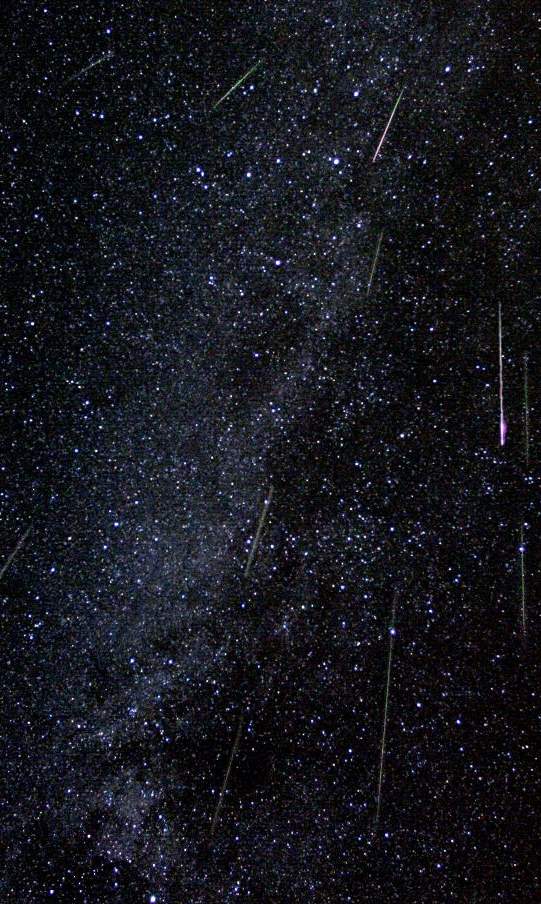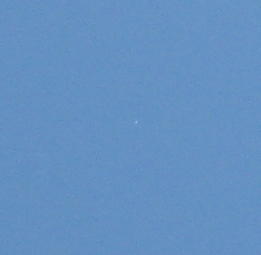I decided to go for it, and set my alarm for 2:30 AM (ick) to see the eclipse. The moon was nearing totality at that point, with a too-shallow crescent near the bottom and the rest in slightly reddish shadow. My original plan was to lie down on the balcony and watch, but it turned out there was a tree in the way, but if I went over to the other end, by the patio table, I was able to see it.
I watched as the crescent shrank to a sliver, and finally the moon was shaded dark red to dull red to light red to a much dimmer white than usual. The deeper reds slowly spread across its face, edging out the brighter colors near the edge of the Earth’s shadow.
I brought my cheesy little digital camera, and took some photos. It promptly started warning me the battery was low, and I had to dig around in the dark to find the spare. I think this is the best of the pictures, as far as showing the eclipsed moon itself goes:
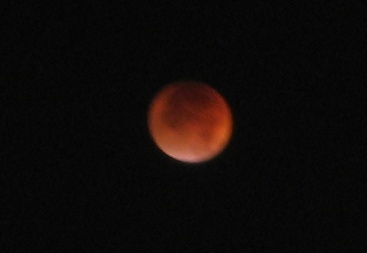
Eclipsed Moon, 3:13 AM
Earlier in the evening I was testing different shutter settings. I thought this photo from the floor of the balcony turned out interesting:
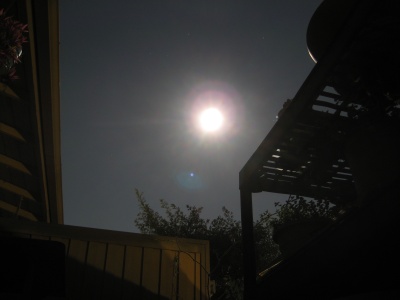
Yes, that’s lit by moonlight (in a long exposure).
OK, I’m going out to take one last look at the moon (I think I heard the downstairs neighbors’ door open a few minutes ago, so at least I’m not the only one up for this) and then go back to bed. I’ll look through my photos again tomorrow and post anything else that looks good.
Update: Here’s a shot from deeper in totality, just after the mid-point of the eclipse:
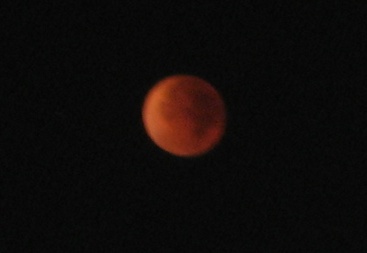
Eclipsed Moon, 3:40 AM
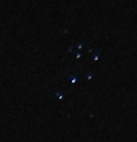 And here’s the Pleiades, which I spotted when I turned around and looked up. A far cry from this, but hey, I figured I was doing pretty well to be getting photos of stars with this type of camera in the first place.
And here’s the Pleiades, which I spotted when I turned around and looked up. A far cry from this, but hey, I figured I was doing pretty well to be getting photos of stars with this type of camera in the first place.
I think the last time I saw the Pleiades, Hyades, Taurus and Orion in August, I was something like 14 and on a trip with my scout troop to do whitewater rafting. We slept out under the stars and I just happened to wake up at 3 in the morning.
OK, sleep is calling to me. Signing off…
Update 2: After I went to bed, I realized that I shouldn’t have dismissed my idea of scrounging up some film and pulling my manual SLR camera out of the closet. Between the better optics, more shutter control, and an actual telephoto lens, I probably would have gotten considerably better pictures. I just don’t think we have any rolls of film lying around that haven’t expired, and I didn’t want to run out at 11:00 to get some. Ah, well. Something to think about for next time.
Also, I realized that these blurry pictures look kind of like a Moon-sized version of Mars. Hmm, that might confuse some people. 😉
Update 3: You have to check out Thursday’s APOD: an incredible telescopic image of the moon taken during totality.



 And here’s the Pleiades, which I spotted when I turned around and looked up. A far cry from
And here’s the Pleiades, which I spotted when I turned around and looked up. A far cry from 